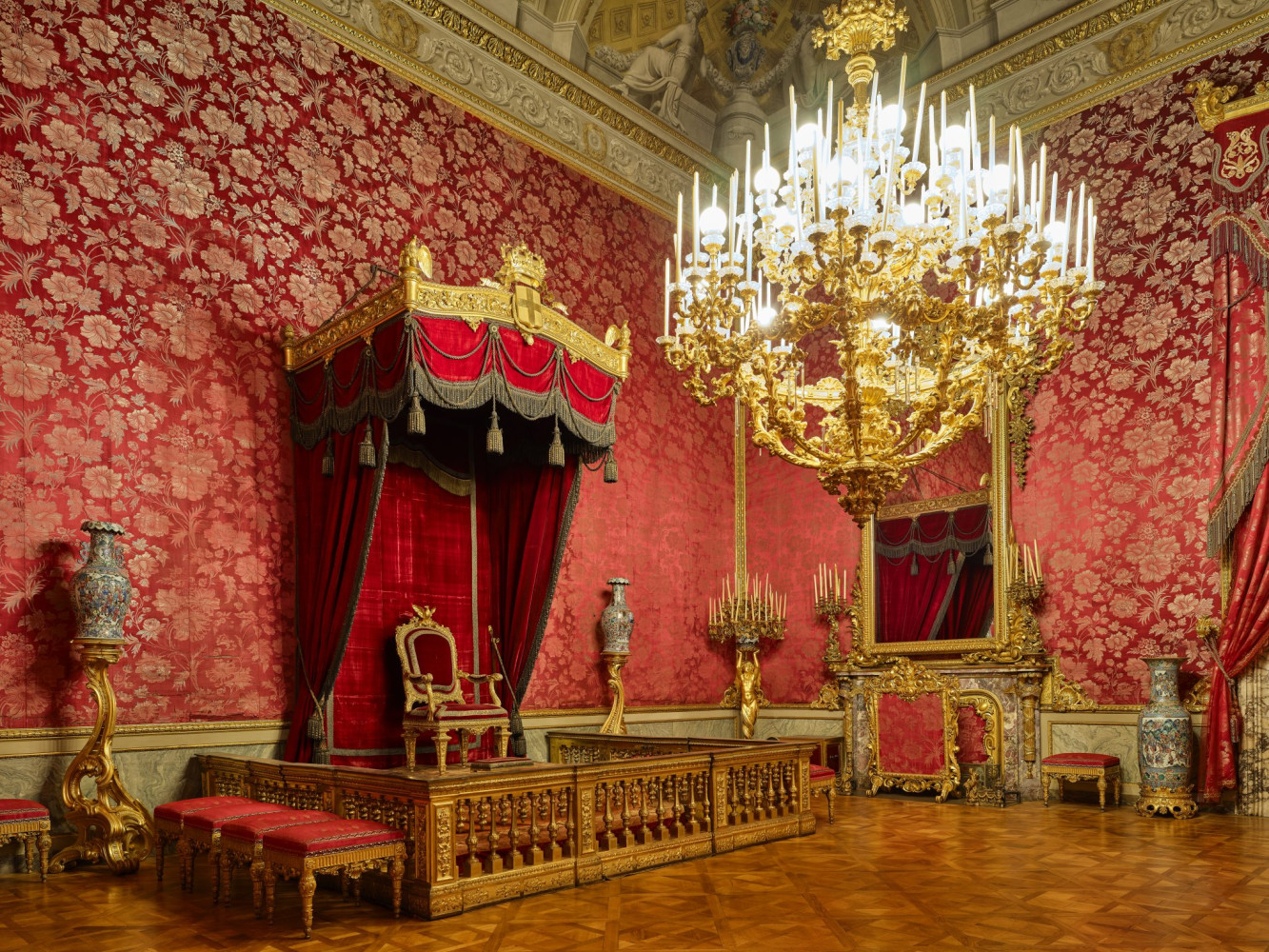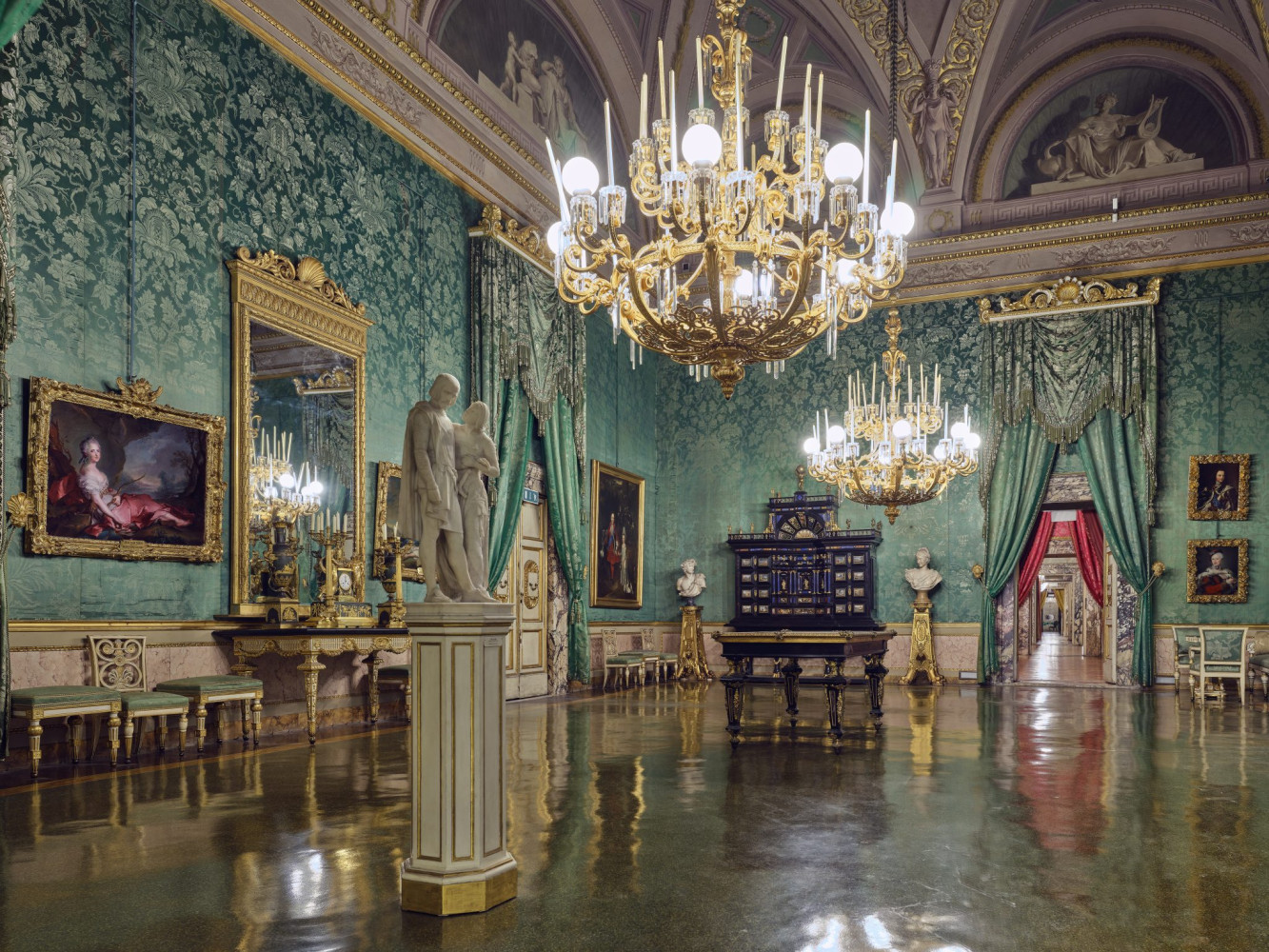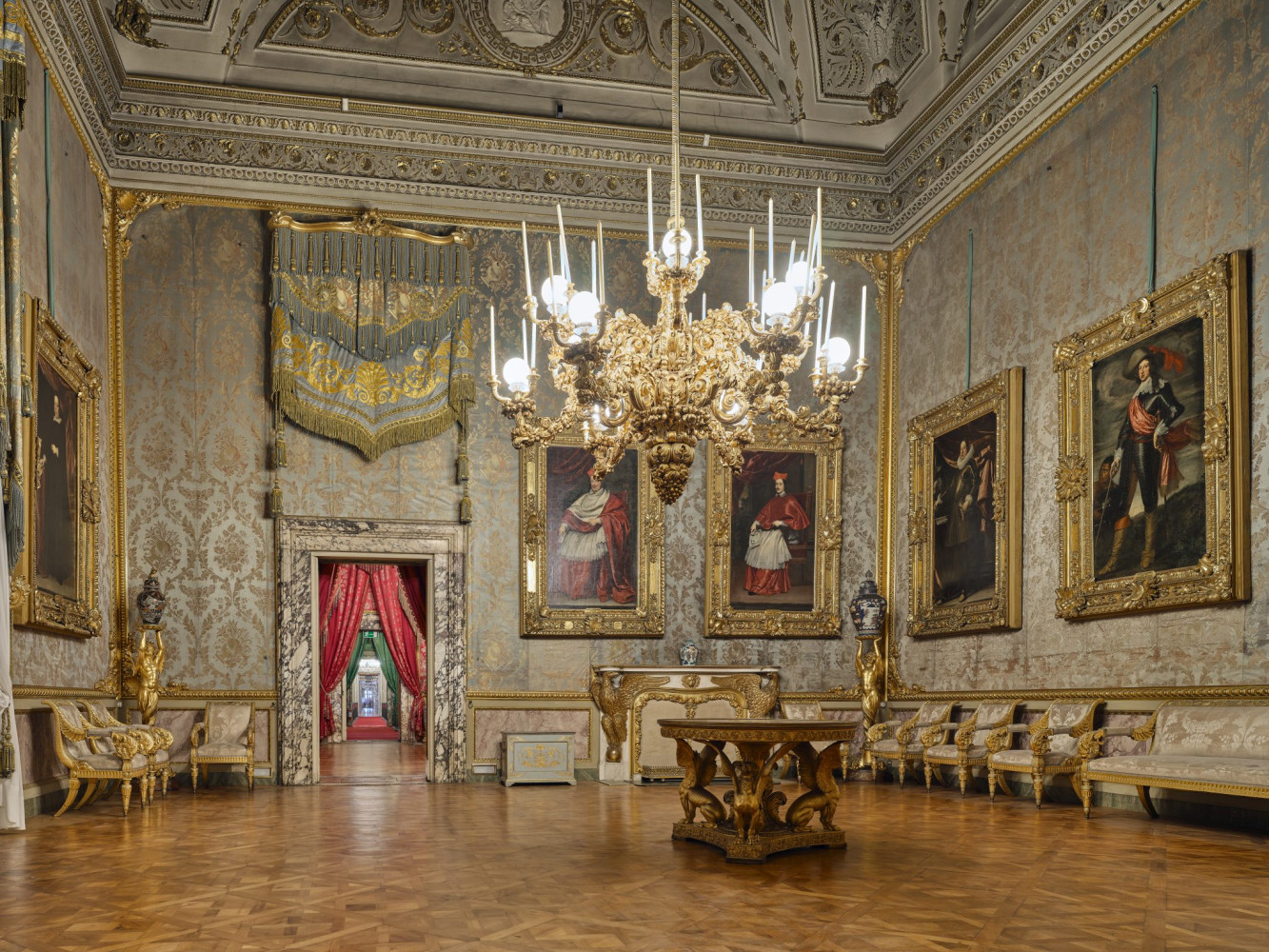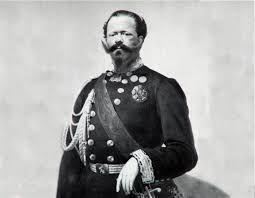
ROYAL APARTMENTS REOPEN AFTER RESTORATION AT PITTI PALACE
The magnificent Royal Apartments at the Pitti Palace reopened to the public after being closed for 5 years on January 21. A team of restorers led by Alessandra Griffo carried out a meticulous and very complex restoration work. Guided tours are available every day for 10.00 am to 6.00 pm.
On January 21, the Royal Apartments at the Pitti Palace finally came back to life after a 5-year closure and a 9-month restoration work. The team of restorers led by Alessandra Griffo, curator of the Royal Apartments at the Pitti Palace, paid attention to every detail, from the carvings and the stuccoes on the ceiling to the Neogothic and Empire-style pieces of furniture. The carpets have been removed to show the perfectly preserved wooden floor. Director Griffo said, "Reopening the apartments allowed us to recover the vision of Palazzo Pitti in its entirety, not just as a collection of independent museums but as a single palace".
The rooms can only be toured on request. The guided tours allow groups of max. 20 people every hour from 10.00 am to 6.00 pm. If you would like to tour the rooms with one of our Walks Inside Florence expert guides, you can request a special tour and we will contact the museum for you.

THE ROYAL APARTMENTS
When Italy was unified and Florence became the capital of the Kingdom of Italy, King Victor Emmanuel II from the House of Savoy moved into the Pitti Palace with his family. The Royal Apartments were born out of the ancient Medici and then Hapsburg-Lorraine rooms, which the restoration has brought back to life highlighting the historical layers of these luxury spaces.
For over three centuries, these incredible rooms were designed to impress the guests of the Italian court and were mostly used for state and ceremonial purposes. They became museum rooms in 1919, when king Victor Emmanuel III gave the Pitti Palace over to state ownership.
One of the most impressive rooms is the Green Room, which was formerly the Guard Room of Prince Ferdinand de' Medici. The beatifully preserved fresco in the center of the ceiling was painted by Luca Giordano and commissined by Grand Duke Cosimo III, father of Ferdinand, in 1682. It is an Allegory depicting The Peace between Fiesole and Florence, and it's the only decoration from the Medici time. The magnificent inlaid-stone cabinet "Victoria della Rovere" was added by the Hapsburg-Lorraine family, as well as the green silk that covers the walls. The portraits were the "final touch" that the House of Savoy added to this stunningly layered room.

Other royal rooms include the Celestial Salon, where the Medici kept their musical instruments, some of which can still be seen at the Galleria dell'Accademia. In the 1700s, the Hapsburg-Lorraine family turned it into a dining room and decorated the ceiling with white and gold stucco. The large chandelier hanging from the ceiling was commissioned by Cosimo III in 1697, and it definitely shows the opulence and the decademt Baroque taste of the Late Medici Family.
THE MISTERY OF THE FIRST KING OF ITALY

Everybody knows that the first king of Italy was Victor Emmanuel II of the House of Savoy. There are many legends about this king and one of these is linked to a misterious accident that happened in Florence right on the hill behind the Pitti Palace.
Carlo Alberto, his wife Maria Teresa, and their newborn baby Victor Emmanuel, future king of Italy, were staying at a Florence Villa called Poggio Imperiale. The villa sits on top of the hill on the south side of the Boboli Gardens, at the back of the Pitti Palace, and it's surrounded by trees and flowers, in a perfect Florentine environment exuding peace and relaxation. However, on the night of September 16th 1824, something far from relaxing happened in the villa. Something that has been described as a disturbing mystery by the greatest Italian historians of the time.
The royal baby was peacefully sleeping in his crib, when his nurse went to see him. Teresa Zanotti had been a royal nurse for quite some time, and she was very experienced, which makes the incident even more baffling. When she checked the baby, she noticed that the mosquito net protecting the child had fallen off, leaving the little toddler's face unconvered. As she picked the net back up and put it on the baby's face, she accidentally knocked down a candle that was sitting on the night-stand right next to the crib.
The whole netting around the crib suddenly caught fire and she started screaming in horror. Teresa grabbed the baby and fled the room, rescuing the child but getting terribly burned. She will die a few days later from the burns. The baby survived the fire and, given the damage cause by the fire, someone thought it must have been some kind of miracle.
However, few believed in divine intervention and rumors started to spread. The most commanded Italian historian, Massimo d'Azeglio, complained about the king being too unrefined and almost coarse. He sometimes joked about his rough hands that looked like those of a butcher, knotty and callous. Shortly before dying, d'Azeglio, who was also a personal friend of Victor Emmanuel's father, said that the baby didn't survive the fire but actually perished in the flames. It was then decided that the son of Gaetano Tiburzi, a butcher that worked near the Pitti Palace, was to replace the dead baby and become the future king of Italy. The butcher actually reported his son missing a few days later and bought himself a grand palace next to Pitti Square.
The story was never confirmed by the royal family or the butcher, so the mystery remains.
Come with us to visit the Pitti Palace to learn more!
Back




